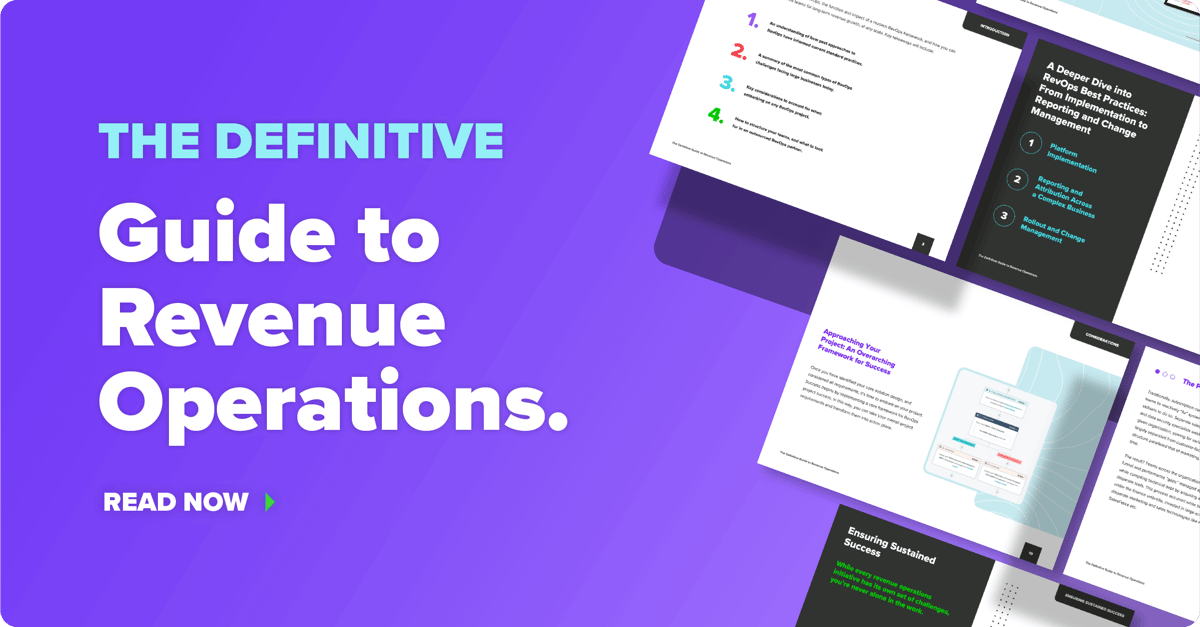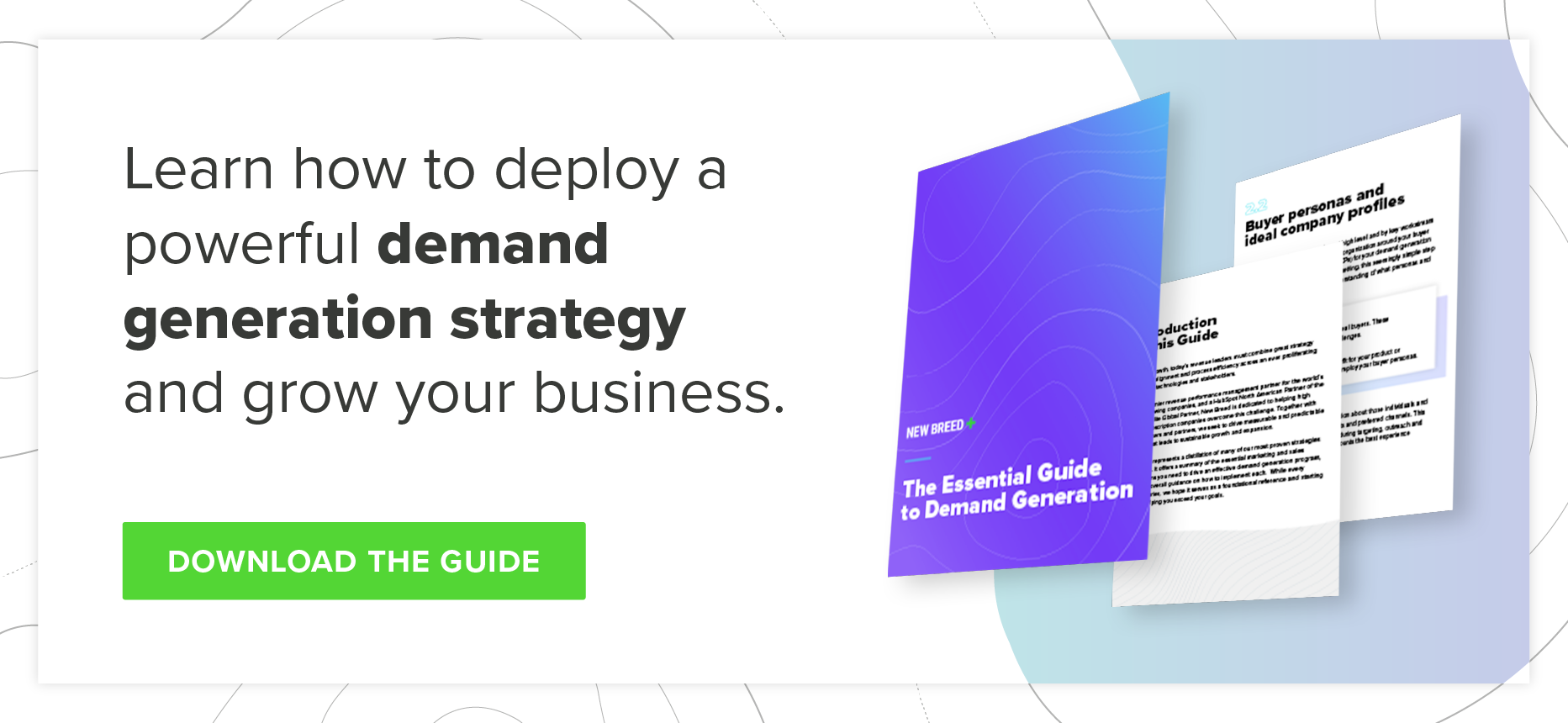How to Boost B2B Lead Generation With Effective Cold Outreach
Identifying and using the most effective tactics to build strong relationships with customers can be a challenge. Fortunately, in 2022, well-executed cold email outreach is still a viable tactic for lead generation and a key component of a unified marketing and sales approach.
According to recent statistics, email is nearly 40x better than social media when it comes to driving lead generation. Yet at the same time, the average open rate rarely exceeds 25%, demonstrating that not all cold email campaigns are equally effective for B2B lead generation. In this guide, we will take a look at ten best practices you can use to attract valuable leads with cold email outreach and discuss how they integrate with a multi-pronged demand generation strategy.
Why Cold Email Outreach for B2B Lead Generation?
To start, let’s align on our definitions. Cold email outreach:
- Is one of the most budget-friendly tactics
- Has one of the highest ROIs on the market (up to 4200%).
- Is fully scalable and can be automated within a low budget.
- Can be hyper-personalized, resulting in more valuable leads, better response rates and therefore, more revenue.
- Is less pushy than cold calls (a well-crafted, personalized outreach is not intrusive at all).
With cold email outreach, the goal is to build a strong relationship with your prospects, understand their needs and preferences, and ultimately provide the value they need to become customers.
The best part? Creating a professional cold email outreach campaign is not as difficult as you might think. All you need to do is follow the main tips that we analyze below.
10 Effective Tips to Generate B2B Leads Using Cold Email Outreach
1. Organize around an ideal customer profile
This is one of the most common mistakes companies make in the early stages of their cold outreach. For your campaign to be successful, you need a solid understanding of the target companies in question. This not only informs your messaging and communication style but also helps you segment your email distribution to the right groups of contacts based on their company criteria. So, before you start your cold outreach, you need to create an ideal customer profile (ICP). Then, all that's left is for you to set smart goals and use your ICP documentation to plan and structure your email outreach.
2. Find decision-makers at your target companies
Once you have defined your ICPs, it's time to find contact information for key decision-makers. Although several social media platforms can help you track down potential leads, LinkedIn is more than 270% more effective than others.
After you find a company that matches your ICP, visit their official LinkedIn page and connect with some of the company's key decision-makers. LinkedIn makes this easy by integrating a comprehensive employee page for each company. After connecting with decision-makers on LinkedIn, look to obtain their contact information using an online Email Finder (or similar tool) to save time finding valid email addresses. Just by adding some of the information you’ve collected about your prospect (full name and business domain), you’ll be able to find their professional email address in just a few seconds.
3. Build and clean your contact list
Now that you have verified the contact details of your prospects, you can easily build a comprehensive contact list. For your cold email campaign to be successful, you need your contact list to be ‘clean’.
In fast-moving industries, people tend to change jobs and positions, making an email address prone to change. For example, if you have a contact on your email list from company A, and you decided to reach out to them again six months later, it is advisable to check if the email address is still active. The reason? Sending an email to an inactive email address will result in an email bounce, ultimately plundering your email deliverability rates.
A great way to keep your email lists clean is to schedule consistent data clean-up. Depending on your list size, you can check all contact information and its validity on a monthly, quarterly or yearly basis. That way, you can ensure that a majority of your emails will land in recipients’ inboxes without lowering your reputation and deliverability.
It is key to verify your prospects’ email addresses before you add them to your B2B contact list. There are a few free email verifiers that ensure a professional email address is valid and ready for use in your campaign. Since you have already verified the contact information (including the email addresses), you are one step closer to increasing your email deliverability. After all, the first thing needed in a successful outreach is for your emails to be actually delivered to your prospects.
4. Write catchy, relevant subject lines
Subject lines are the first elements your campaign prospects will see. This is why your subject line should be both short and personalized. In just a few words, you have to explain why you’re reaching out and why it’s worth their time to engage.
HubSpot offers easy-to-use personalization tokens you can use in subject lines and throughout your emails. To personalize your emails, you can use specific custom attributes, such as “Hey ” or “It was nice meeting you at ”. At the same time, your subject line should be urgent, and always encourage your prospects to open the email quickly.
No matter how catchy, remember to align your subject lines with your recipients' overall point in their customer journey. If you’re looking to educate them on market trends by sharing recent content, your subject line will be more informative than if you’re looking for immediate conversions.
5. Personalize your email copy
Even though a personalized subject line can easily improve your outreach open rates, your email copy is the most important element when it comes to standing out from the crowd and getting effective results from your cold outreach.
Make sure your email openers are both personalized (recipient's first name and company) and answer a very important question: Why are you reaching out? This is where actionable data in your CRM comes into play. Using details on their contact and company record, you can further personalize the pain points in this outreach and align it to your other content and advertising material they see in the market.
After that, you may want to explain how your products or services can help your prospect solve this pain point. By the end of your copy, you should also add a CTA that will motivate your recipient and (hopefully) improve your response rate.
6. Don’t forget to follow up
Not all your B2B leads will respond to your initial outreach. That’s reasonable; don’t forget that you are trying to connect with important decision-makers who might receive hundreds of emails per day. This is why follow-up sequences are a must.
A well-rounded follow-up sequence should never be pushy, and should offer different value points in different emails. For example, if your first touchpoint offers to share a new piece of relevant content but yields no response, later touchpoints in your sequence should either reframe the content offer from a different value point or present another asset entirely. There are multiple templates and automation tools that you can use to make sure that your follow-up emails are personalized, such as Sequences and Workflows in HubSpot.
7. Add a clear and simple CTA
In general, CTAs can be used as an effective email sign-off. As noted above, the first step is to personalize the content of your email and explain why your company will be a valuable partner for your prospect.
But none of that will drive lead generation if you don’t present prospects with a clear next step. As such, a CTA should be simple and clear while driving urgency. Phrases like ‘Claim your discount today’ and ‘Book your demo now’ are good examples; they are transparent about what will happen next, and encourage recipients to do something about it immediately — not later, when their needs have become less urgent.
8. Include a professional signature
A well-crafted email should always be closed with a professional signature. There are multiple ways to create an email signature. You can either use your CRM’s native signature builder (HubSpot has a great one), download a pre-made signature template or use software like Microsoft Word to create one yourself.
In any case, a professional signature should always include:
- Your full name
- Your company and job position
- Your professional website and email address
- Your (personal) social media profiles
- A CTA or information about your products/services
9. Automate and scale your outreach
Automation is your best tool throughout a cold outreach campaign, allowing you to make connections at scale and dramatically increase your sales productivity.
There are several solutions you can use to automate your sequences that range from simple, one-step tools to large enterprise-grade marketing automation platforms. From creating a concise prospect list, to automating the timing of email sends to creating reminders and tasks for follow-up actions, there's nothing you can not automate.
In general, there’s a true paradigm that automation makes personalization more difficult (and vice versa). As you plan to launch a large-scale cold outreach campaign by building lead lists, writing campaign material and setting up reports in your marketing automation platform, remember to use segmentation and ICP details to keep these automated emails as relevant as possible for all of your audience. If you find that your emails are only relevant to a small handful of recipients, you should probably compartmentalize the campaign messaging and offer into smaller pieces that will resonate with customer sub-groups.
10. A/B test your campaigns
Just as it is in other channels, A/B testing is a great tactic for effective cold outreach. Not only does it help you adjust and optimize your outreach as the campaign progresses, but it helps you and your team learn what messages, timing and overall outreach strategy are the most effective. With these insights, you can design better campiagns in the future and apply your learnings across channels.
When you setup an A/B test, be intentional about which criteria you’re testing. Generally, it’s a best practice to only test one element of your outreach at once so you can pinpoint what’s affecting performance. That could be your subject lines, personalization approach, or opening line. Whatever it is, write down your outcomes and regularly share them with other stakeholders.
Conclusion
With a wide range of demand generation tactics available to modern businesses, cold outreach remains an effective and budget-friendly method to building pipeline — especially when complemented by your efforts in other digital channels. By following the best practices outlined above and balancing your resources appropriately, effective cold outreach is within reach for most demand generation teams. So, don’t be afraid to experiment and learn. Plan, create, evaluate and repeat until you find what works best for you.
Antonio Gabrić
Antonio is an outreach manager at Hunter. He is passionate about testing different outreach tactics and sharing results with the community. When he is not connecting with industry leaders you can find him on his motorbike exploring off-the-beaten paths around the world.





